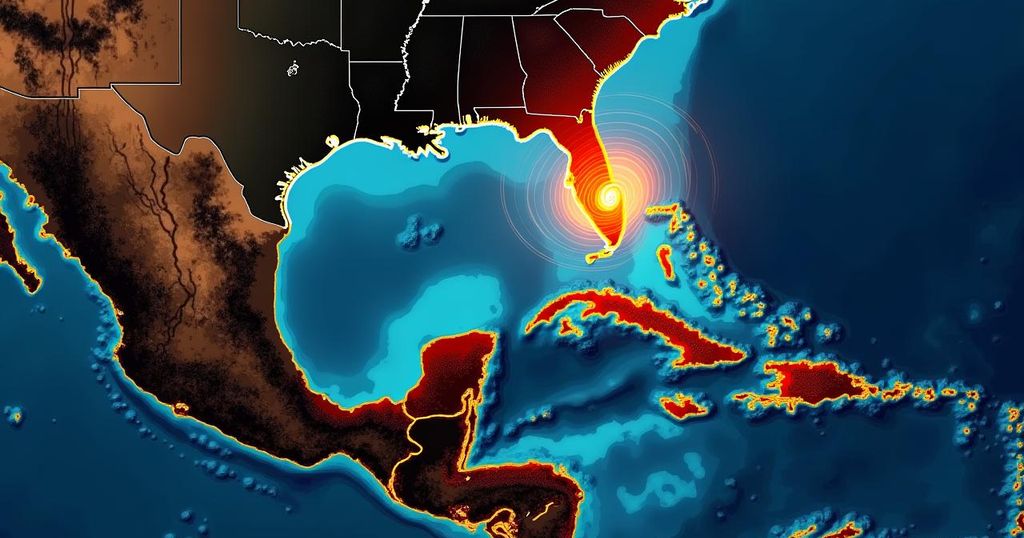NHC Updates on Tropical Storm Activity: Gulf Threat Diminishes but Risks Remain
The National Hurricane Center has reported a slight reduction in the chances of tropical storm development in the Gulf of Mexico. Hurricane Kirk, a strong Category 3 storm, is intensifying and may become a Category 4 hurricane while potentially affecting the U.S. East Coast. Meanwhile, Tropical Storm Leslie is expected to strengthen and move westward, while Florida prepares for heavy rain from an approaching system.
According to the latest advisory from the National Hurricane Center (NHC), the likelihood of a tropical storm forming in the Gulf of Mexico has decreased. Recent hurricane activity has increased following a quiet period in August, with three named storms developing, one of which, Hurricane Helene, caused significant damage and loss of life, resulting in at least 128 fatalities and many individuals still unaccounted for. Although the system currently situated in the Gulf of Mexico now poses a lesser threat, Hurricane Kirk has intensified into a major hurricane located in the central Atlantic, with maximum sustained winds reaching 125 miles per hour, categorizing it as a strong Category 3 hurricane. Forecasts suggest that Kirk may strengthen to a Category 4 storm with wind speeds of 140 mph within the next twelve hours, while it is anticipated to remain over the open waters of the Atlantic Ocean, potentially affecting the East Coast of the United States by Sunday. In addition, Tropical Storm Leslie, located to the west of Africa, is projected to upgrade to hurricane status. Furthermore, a weather system approaching the Gulf of Mexico is expected to deliver heavy rainfall and flooding to Florida, regardless of whether it develops into a tropical storm or hurricane. The advisory highlighted that the system in the Gulf, which originated from the western Caribbean Sea, has reduced chances of development, with strong to near-gale force winds expected to subside by Thursday evening. Hurricane Kirk’s latest advisory places it 1,130 miles east of the Northern Leeward Islands, moving at a northwest speed of 10 mph. The forecast predicts a change in direction towards the north and northeast by the weekend, with hurricane-force winds extending 35 miles from its center and tropical-storm-force winds reaching 185 miles outward.
This article discusses the recent updates from the National Hurricane Center regarding the weather systems affecting the Gulf of Mexico and the Atlantic Ocean. Tropical storms and hurricanes are a significant focus during the hurricane season, which can lead to severe weather conditions affecting life and property. The commentary emphasizes the developing situation in the Gulf, as well as the notable activities of Hurricane Kirk and Tropical Storm Leslie, which could influence weather patterns nationwide and internationally. The implications of these weather systems extend beyond immediate local threats, highlighting concerns for shipping and coastal safety.
In conclusion, while the risk of tropical storm development in the Gulf of Mexico has waned, the emergence of Hurricane Kirk and Tropical Storm Leslie presents ongoing concerns. Kirk’s anticipated intensification and potential impacts on the U.S. East Coast warrant close monitoring. The situation in Florida indicates a risk of heavy precipitation regardless of storm development. Overall, vigilance and preparedness remain essential as we continue to observe these weather patterns.
Original Source: www.statesman.com




Post Comment